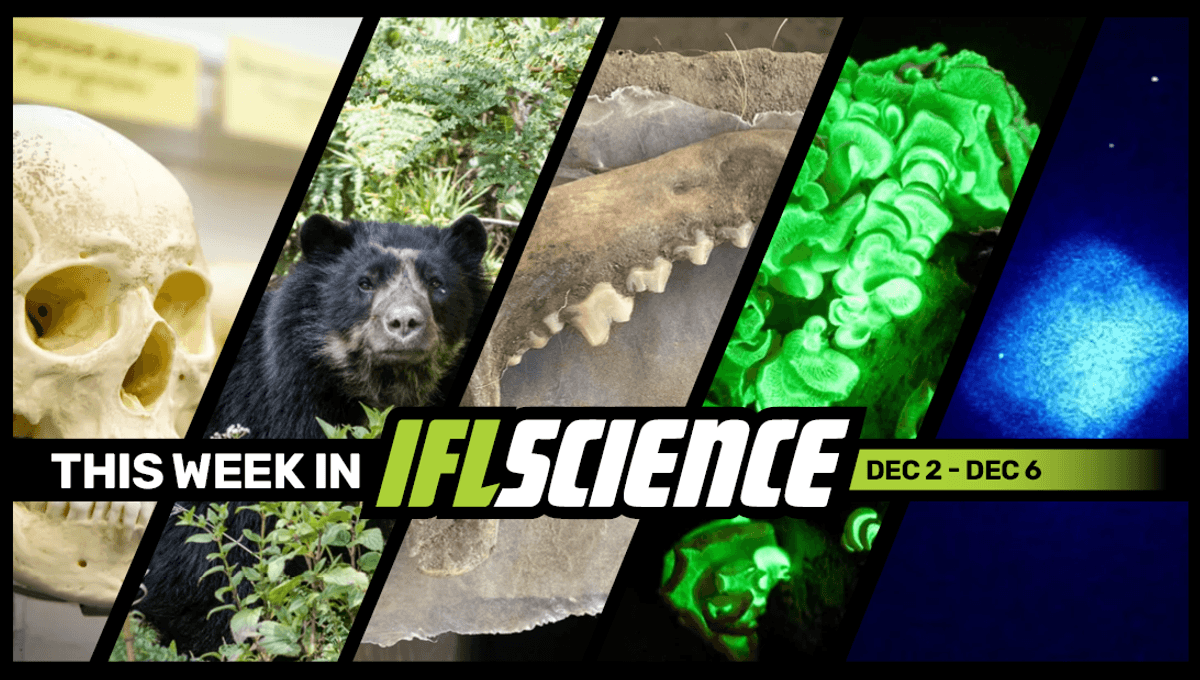
This week, incredible footage showing a “bear’s-eye-view” of Andean bears has revealed never-before-seen behaviors, new research suggests that ancient Americans and dogs may have become best buddies 2,000 years earlier than we previously thought, and glowing wood is now an option thanks to a ghostly bioluminescent fungus. Finally, we explore the unlikely coexistence of protected nature sanctuaries and rocket launch centers.
Subscribe to the IFLScience newsletter for all the biggest science news delivered straight to your inbox every Wednesday and Saturday.
Have We Uncovered A New Species Of Ancient Humans?
Were you to time travel to Asia in the late Middle and early Late Pleistocene periods, some 300,000 to 50,000 years ago, you would discover a melting pot of different human species – from the diminutive Homo luzonensis in the Philippines to the Homo longi (or ‘dragon man) inhabiting the frigid climes of Northern China. Now, scientists believe they have discovered a new human species that they have named Homo juluensis. Read the full story here
Incredible “Bear’s-Eye View” Videos Of Andean Bears Reveal Never-Before-Seen Behaviors
If you’ve ever wanted to experience the world as a bear, then boy do we have a treat for you. Remarkable footage has captured the lives of Andean bears, also known as spectacled bears, or Paddington, like never before. Using collar cams (like the ones people love attaching to their cats), a team with the National Geographic and Rolex Perpetual Planet Amazon Expedition witnessed never-before-seen behaviors for these elusive animals, and some of them are quite surprising… Read the full story here
Ancient Americans And Dogs Became Best Buddies 2,000 Years Earlier Than Thought
Humanity’s longstanding friendship with dogs may be even deeper than previously realized. Archaeological remains of a well-loved hound in Alaska suggest that early people in the Americas had a close relationship with canine companions at least 12,000 years ago, around 2,000 years earlier than physical evidence previously suggested. Read the full story here
Glowing Wood Now An Option Thanks To A Curious Fungus’s Ghostly Bioluminescence
A team of scientists has created a new kind of wood that glows in the dark thanks to the presence of a fungus that exhibits bioluminescence. It sounds like a building material fresh out of Avatar, but this ghostly glow is seen in nature as what’s known as “foxfire” – a phenomenon that inspired the team to try and work it into building materials. Read the full story here
World’s First Carbon-14 Diamond Battery Offers Hope Of Power For Thousands Of Years
The first battery made from carbon-14 encased within a diamond that can replace a standard lithium-ion battery has been produced, culminating from years of research. Instruments powered by such a device could last millennia. Of more immediate relevance, they could last a lifetime when powering devices like pacemakers, avoiding the need for replacement operations. Read the full story here
TWIS is published weekly on our Linkedin page, join us there for even more content.
Feature of the week:
The Unlikely Coexistence Of Spaceships And Wild Nature Around The World
Portrayals of futuristic activity seldom include nature in its wildest state. Sure, there are intriguing visions of the future where the two coexist but usually, we see the wild in opposition to the sleek aluminum-colored vision of the day after tomorrow. In reality, this is not true. Around the world, nature and cutting-edge technologies already coexist, and when it comes to some spaceports – curiously, they thrive. Read the full story here
More content:
Have you seen our e-magazine, CURIOUS? Issue 29 December 2024 is available now. This month we asked, “Why Is Laughter Contagious?” – check it out for exclusive interviews, book excerpts, long reads, and more.
PLUS, the We Have Questions podcast – an audio version of our coveted CURIOUS e-magazine column – continues. In episode 3, we ask “The Biggest Wild Goose Is… Poisonous?”
Season 4 of IFLScience’s The Big Questions podcast has concluded. To revisit all four season’s episodes, click here.
Source Link: Have We Uncovered A New Species Of Ancient Humans? World's First Carbon-14 Diamond Battery, And Much More This Week